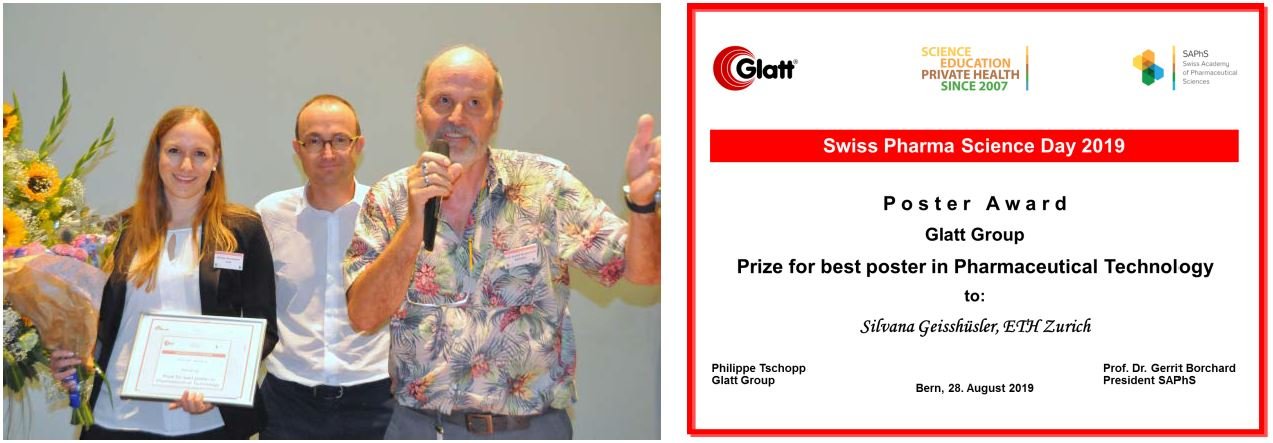Amphiphilic Cyclodextrin Particles as a New Generation Vaccine Platform

Introduction: Natural cyclodextrins (CDs) hold great potential as a novel vaccine delivery platform. CDs are
well established as pharmaceutical excipients for increasing drug solubility, stability, and affording prolonged drug release. Derivatisation can render CDs amphiphilic enabling them to self-assemble into nanoparticles and entrap or adsorb antigens in order to deliver them to local immune cells at the injection site. Supramolecular CD-structures have already been described for gene and drug delivery [1], however, to our knowledge no report of a CD-based particulate vaccine delivery system has appeared in the literature to date.
Aims: We aim at developing amphiphilic β-CD-based nanoparticles as vaccine delivery system for antigens to promote their efficient uptake by antigen presenting cells (APCs) and elicit strong immune responses.
Methods: In a first step, amphiphilic β-CDs were synthesized by grafting thioalkyl chains of different lengths (C4, C6, C8, C12, C18) onto the primary face of natural β-CDs [2]. Different particle formation methods were evaluated for their suitability to form nanoparticles (e.g. vesicle formation via extrusion, sonication, nanoprecipitation). As nanoprecipitation [3] showed the most promising results, the process was optimized. The obtained particles were characterized by their size distribution, zeta-potential, and dye entrapment capacity. Nanoparticles (NP) of 3 different amphiphilic β-CD derivatives (NPC4, NPC8, NPC12) were compared and their morphology was assessed using transmission and cryo-scanning electron microscopy (TEM and cryo-SEM). For encapsulation studies, lipophilic dye as well as MHC class I restricted model peptides were used. First in vitro studies were carried out with bone marrow derived dendritic cells (BMDCs) and IC-21 macrophages.
Results: Butylthio-, hexanethio-, octanethio-, dodecanethio-, and octadecanethio-β-CDs were produced and isolated in high yield (60-70%). The nanoprecipitation method reproducibly formed amphiphilic β-CD nanoparticles using the different derivatives NPC4, NPC8, and NPC12, displaying a hydrodynamic radius of around 150-200 nm with a narrow size distribution. TEM and cryo-SEM imaging visualized spherical shapes and confirmed the results obtained by dynamic light scattering. The nanoparticles did not produce significant toxicity on BMDCs and IC-21. Antigen entrapment was achieved with LCMV gp33 peptide, ovalbumin 257-264 peptide, and fluorescein labelled ovalbumin.
Conclusions: We developed nanoparticles from different amphiphilic β-CD derivatives to obtain a novel platform for vaccine delivery. The platform provides the capacity to deliver hydrophilic as well as hydrophobic antigens. In vitro studies showed that nanoparticles were actively taken up by APCs. These findings underline the potential of amphiphilic CD nanoparticles as vaccine delivery system, and further in vitro studies are ongoing. The future objective will be to enhance the uptake of peptide antigens entrapped in the nanoparticles by murine and human APCs for subsequent presentation and activation of CD8+ T-cells. The most promising candidates will be tested in vivo for their potential to elicit antigen specific immune response.
C. Geisshüsler, P. Schineis, L. Langer, C. Halin Winter, P. Johansen, S. Kindgen, B. A. Gander
This poster won the best poster award for Pharmaceutical Technology at 12th Swiss Pharma Science Day 2019.

